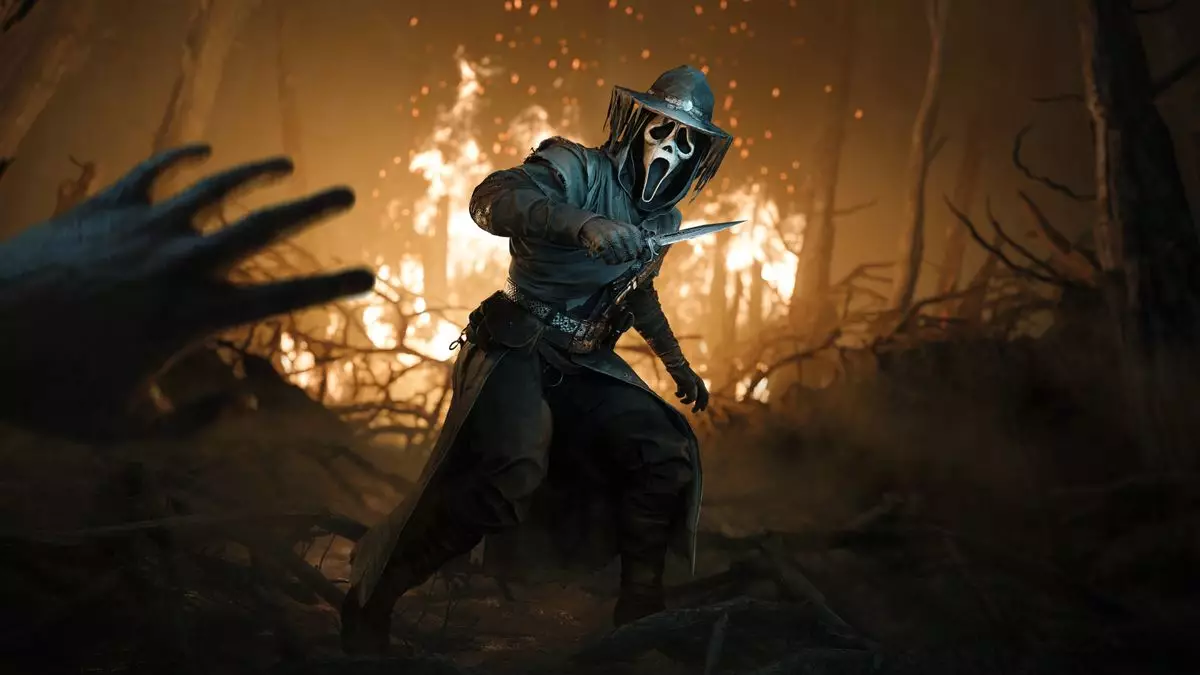Crytek, the developer behind the multiplayer shooter Hunt: Showdown, has recently found itself at the center of a virtual storm following its incorporation of the iconic Ghostface character from the infamous Scream franchise. Set against the backdrop of a stylized version of 1890s Colorado, Hunt: Showdown immerses players in a gritty, atmospheric landscape filled with supernatural beasts and bounties. The introduction of Ghostface, a slasher character rooted in modern horror film lore, raises pertinent questions not only about the cohesion of the game’s universe but also about the implications of such crossovers in gaming. Can a character that has terrorized audiences in contemporary cinema really blend seamlessly into a historical, fictional setting?
The Ghostface Rampage DLC, while perhaps an exciting prospect for some, has faced considerable pushback from the loyal player base. Critics argue that this amalgamation of two disparate worlds could signal a concerning trend within the game franchise. If the developers are content with introducing a 1990s horror villain into a late 19th-century realm, what limitations exist for future collaborations? The outcry reflects a deeper concern about the game’s thematic integrity and direction.
In a lengthy Twitter statement, Crytek addressed the backlash with a mixture of justification and reassurance. The developers emphasized their commitment to preserving the overarching narrative of Hunt while simultaneously exploring innovative partnerships with various intellectual properties. The aim, they say, is to enhance the game’s mythos rather than detract from it.
While the intention to create intertwining stories that attract both new players and long-standing fans is commendable, the reality is that such responses can often feel ambiguous or even dismissive. By asserting their commitment to combining IPs with core themes, Crytek risks sounding defensive, sidelining the valid concerns from their community. It’s crucial for developers to not only share their vision but also to demonstrate that they are actively listening to their audience. Unfortunately, the response may come across as brushing off criticism rather than engaging with it.
One of the key tensions lies in the duality of gaming: the desire for fun versus the necessity for lore. For many players, the essence of multiplayer experiences lies in enjoyment, spontaneity, and camaraderie. The allure of dressing up as a beloved character like Ghostface may outweigh concerns about historical accuracy for casual gamers, fostering a sense of playfulness within the game’s grim environments. However, for dedicated players immersed in the game’s narrative and its world-building, the introduction of incongruous elements can disrupt immersion and break the spell of their carefully constructed experience.
As one observer noted, the phenomenon isn’t unique to Hunt: Showdown. Other games, like Dead by Daylight, have similarly faced discussions surrounding character inclusions. Yet, choices like those made by Crytek—whether to prioritize fun or lore—will shape their community’s perception of the game’s integrity. Ultimately, players want their investment of time and energy to feel valued within the context of the game’s universe while still enjoying the capacity for lightheartedness in gameplay.
As gaming evolves, crossover events are becoming increasingly popular, leading to exciting new possibilities for developers and players alike. However, as exemplified by the Ghostface controversy, they also pose risks of misalignment between a game’s essence and its recognizable IPs. Striking the right balance between honoring an intellectual property’s legacy and integrating that character into a very different universe is undoubtedly a significant challenge.
For Crytek, moving forward, transparency with the community and a willingness to adapt based on feedback could pave the way for healthier interactions surrounding future DLCs. This involves not just incorporating intriguing characters but embedding them into the lore naturally without damaging the essence of the original game.
The reception of the Ghostface skin in Hunt: Showdown highlights the nuanced relationship between player immersion, nostalgia, and the creative choices that developers must navigate. What works for one segment of the player base may not resonate with another, and that delicate balance is crucial for fostering a thriving gaming environment. As gaming communities continue to evolve, understanding and engaging with player sentiments will be key to the longevity of such titles.


Leave a Reply